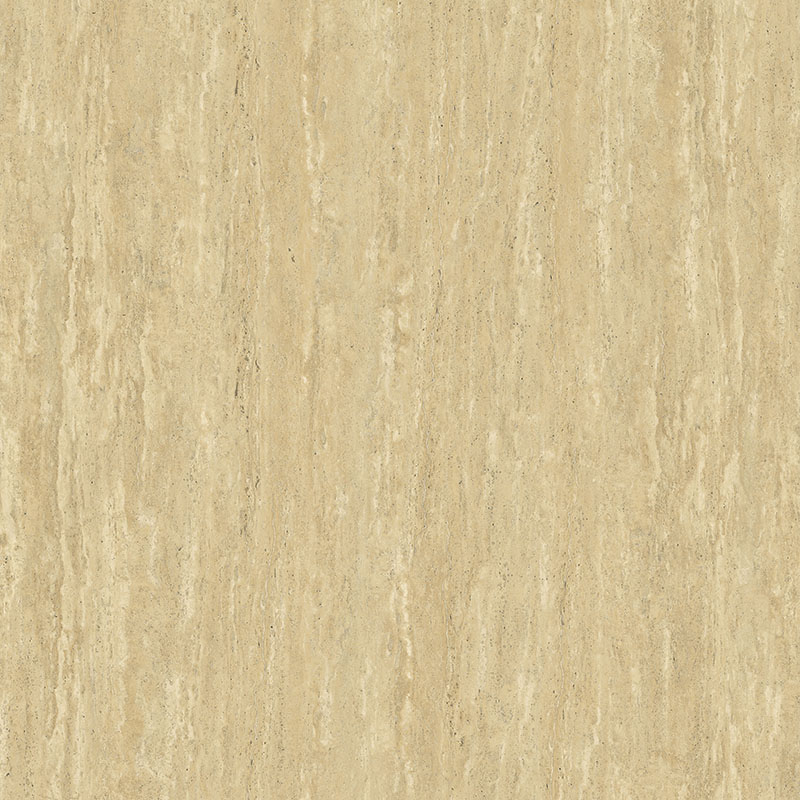As a decorative material, Stone Grain Decorative Film has good visual effects and a wide range of application scenarios, but it is essential to maintain thermal stability to ensure that it can maintain its beauty and functionality during long-term use. Thermal stability refers to the ability of a material to maintain its form, structure and function under high temperature conditions, especially when exposed to sunlight or near a heat source.
The thermal stability of Stone Grain Decorative Film depends first on the PVC material used. High-quality PVC materials usually have good thermal stability and can withstand high temperatures without softening, deformation or fading. In order to improve thermal stability, stone grain film manufacturers usually choose high-temperature resistant PVC formulas and add thermal stabilizers (such as calcium zinc stabilizers, barium zinc stabilizers, etc.). These chemical additives can protect the molecular structure of the material during heat treatment and avoid thermal oxidation or thermal degradation. Through reasonable formulation, the film can maintain its physical properties and aesthetic effects at higher temperatures.
Stone Grain Decorative Film exposed to sunlight for a long time will not only face the damage of ultraviolet rays (UV), but also the impact of rising temperatures. To solve this problem, a layer of UV protection coating is added to the surface of many stone grain films. The coating can not only effectively prevent ultraviolet damage to the film surface, but also improve the thermal stability of the film, avoiding fading, degradation or cracking due to long-term exposure. The application of UV protective coating enables the stone grain film to maintain its color and texture under direct sunlight, enhancing its weather resistance and long-term reliability.
The production process has a direct impact on the thermal stability of Stone Grain Decorative Film. Through precise production technology, the structure and thickness of the film can be reasonably optimized. For example, during the production process, the temperature of the film can be controlled by temperature control equipment to ensure that the film is not overheated during the molding process, avoiding deformation or performance degradation of the film material due to excessive temperature. In addition, the use of advanced hot pressing molding technology can enhance the molecular structure density of the film and improve its heat resistance and stability.
In order to further enhance the thermal stability of Stone Grain Decorative Film, manufacturers can also optimize the heat resistance of the film by adding thermal stability enhancers to the film material. Commonly used thermal stability enhancers include antioxidants, thermal stabilizers, and perovskites. These additives can prevent the film material from decomposing or losing mechanical strength in a high temperature environment, thereby improving its high temperature resistance. When used in high temperature environments, the film structure and texture can remain unchanged, avoiding warping, cracking or fading caused by overheating.
The thickness of the film also has an important impact on thermal stability. Generally speaking, thinner films are more likely to expand or deform at high temperatures, while thicker films usually have better thermal stability. For applications that need to be exposed to high temperature environments for a long time (such as balconies, exterior walls, or places near heating equipment), thicker Stone Grain Decorative Film can be selected to ensure its stability and durability under high temperature conditions. At the same time, thick films can also provide better compression and tensile resistance, making the film less likely to deform during temperature changes.
The temperature resistance level of Stone Grain Decorative Film is usually optimized according to the specific formula and manufacturing process of the film. During the manufacturing process, manufacturers will test the performance of the film at different temperatures to ensure that it is stable in use within the conventional temperature range (such as -30℃ to 70℃). Some stone grain films can also be specially treated to improve their high temperature resistance and even adapt to higher temperature environments (such as high temperature industrial applications or places exposed to long-term sunlight). For stone grain films used in high temperature environments, manufacturers usually provide specific temperature resistance standards or recommended temperature ranges to help users make the right choice.

The thermal stability of Stone Grain Decorative Film is not only reflected in its performance under short-term high temperatures, but also needs to pay attention to its ability to resist heat aging. High temperature environments may accelerate material aging and cause the performance of the film to decline, especially when exposed to heat sources or direct sunlight. In order to ensure that the stone grain film can maintain its function and appearance for a long time, manufacturers will form a solid protective film on the surface of the film by selecting heat-resistant materials and processes to prevent aging caused by heat.
Although Stone Grain Decorative Film itself has strong thermal stability, the user's daily maintenance will also affect its long-term use effect. Regularly cleaning the surface of the film to avoid accumulation of dust, dirt or chemicals can effectively extend the service life of the film. In addition, when used in high temperature environments, avoiding direct contact with heat sources and avoiding long-term high temperature exposure to the surface of the film can also help maintain the thermal stability and appearance of the film.
The thermal stability of Stone Grain Decorative Film is the key to its long-term beauty and functionality in various environments. By selecting high-quality raw materials, adding UV protective coatings, optimizing production processes, adding thermal stability enhancers, and controlling the thickness of the film, the Stone Grain Decorative Film can maintain its performance and beauty in high temperature environments, avoiding fading, deformation, aging, and other problems caused by high temperatures or long-term exposure to the sun. In addition, the heat resistance of the film is also affected by proper maintenance, so users should follow the corresponding maintenance recommendations during use. Through these technical means, Stone Grain Decorative Film can maintain its beauty, durability, and functionality for a long time, becoming an ideal decorative material.